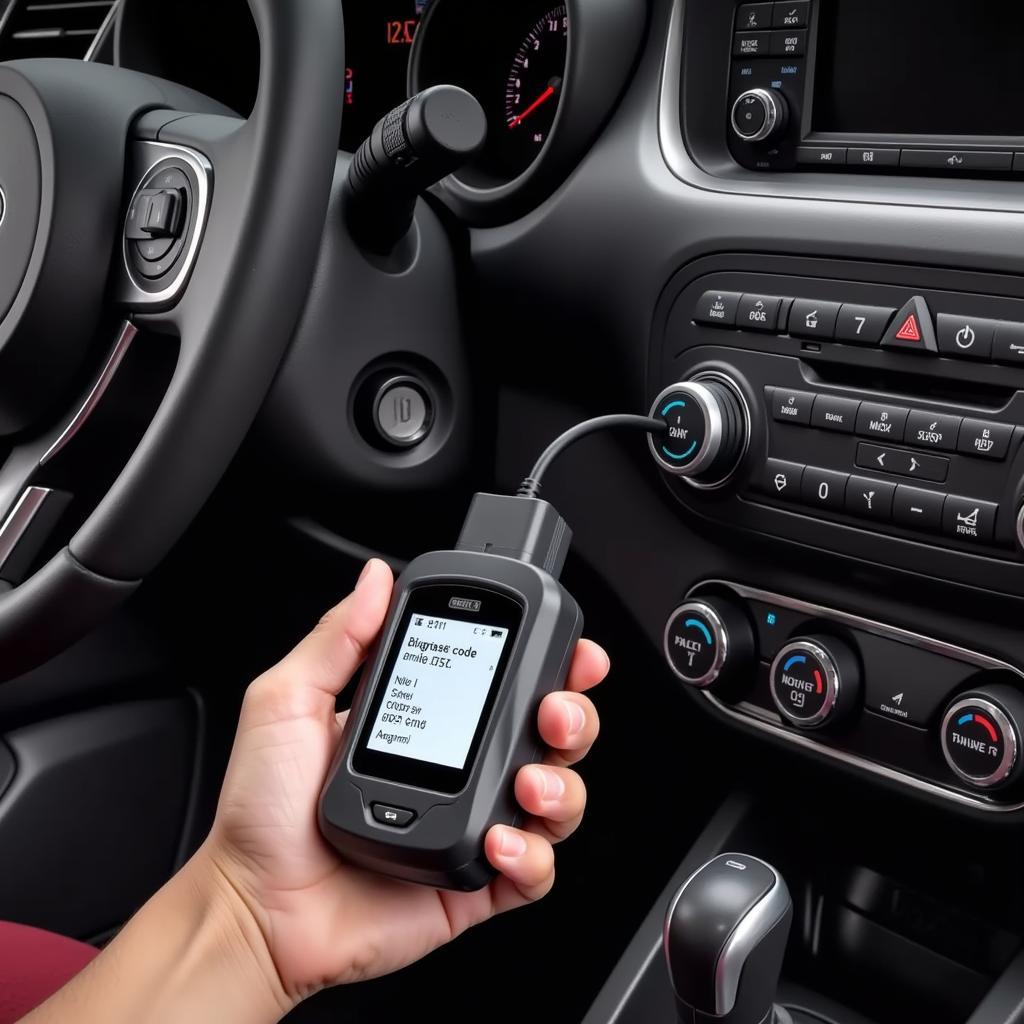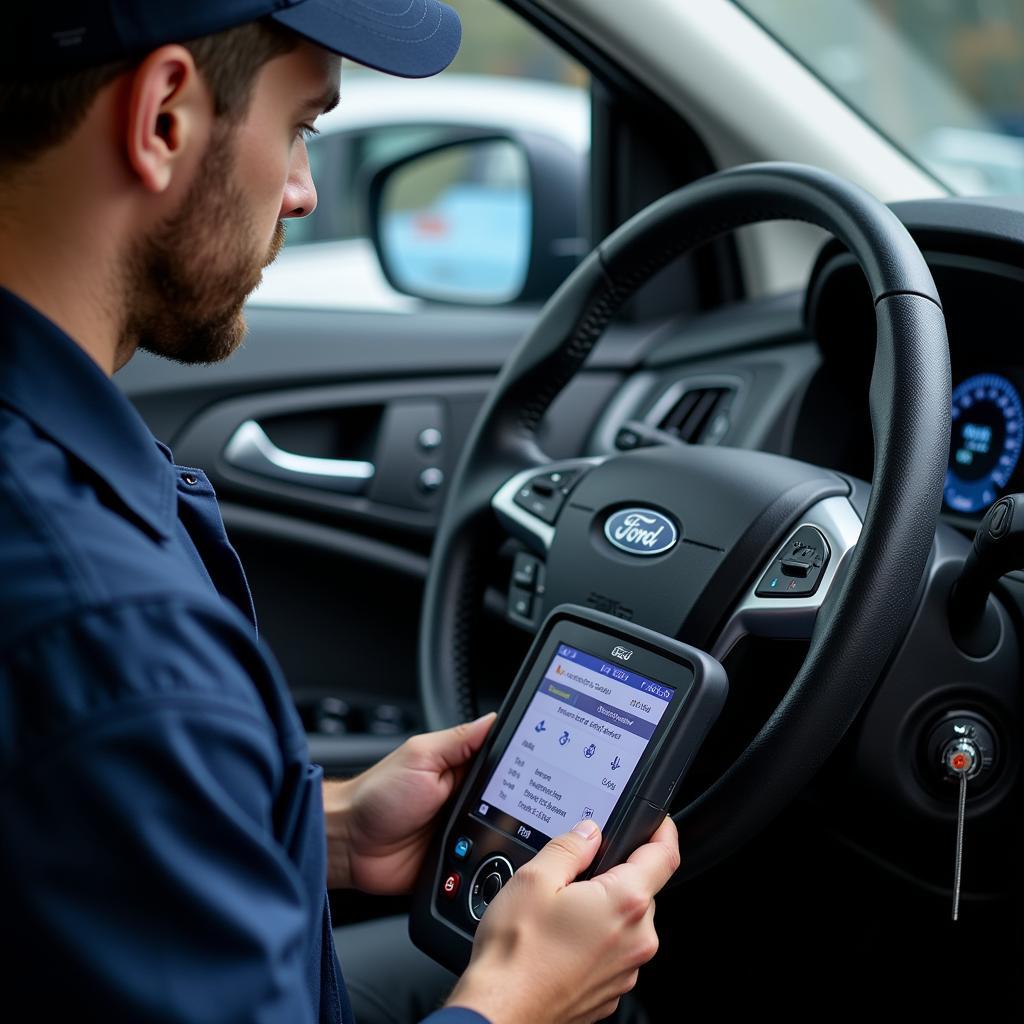This article will guide you through the world of live data on scan tools, explaining its importance, applications, and how it can empower you in the automotive industry. Whether you’re a seasoned mechanic or just starting your journey, understanding live data can significantly enhance your diagnostic abilities.
What is Live Data?
Live data, also known as real-time data, refers to information streamed directly from a vehicle’s sensors and control modules. It provides a snapshot of the vehicle’s current operating conditions, offering valuable insights into various systems and components.
Imagine live data as a dashboard displaying critical information like engine speed, temperature, fuel pressure, and other parameters while the engine is running. This data provides crucial information about the vehicle’s performance and potential issues.
Why is Live Data Important?
Live data plays a pivotal role in diagnostics and troubleshooting, empowering you to:
- Identify problems quickly: By analyzing real-time data, you can spot irregularities and pinpoint potential issues in various systems, including the engine, transmission, ABS, and more.
- Monitor system performance: Live data allows you to monitor how different systems are operating, helping you assess their overall health and identify potential problems before they escalate.
- Verify repairs: You can use live data to confirm that repairs have been successful and the system is operating correctly.
- Optimize vehicle performance: By analyzing live data, you can identify areas for improvement and fine-tune vehicle settings for optimal performance.
Types of Live Data
Live data encompasses information from various sources, including:
- Engine Data: RPM, engine load, fuel pressure, coolant temperature, air intake temperature, oxygen sensor readings, and more.
- Transmission Data: Gear position, transmission fluid temperature, torque converter slip, and shift pressure.
- ABS Data: Wheel speed, ABS module status, and brake pressure.
- Body Control Module Data: Door ajar status, seatbelt status, and interior light readings.
- Airbag Data: Airbag system status and deployment history.
- Other Sensors: Vehicle speed, throttle position, steering angle, and ambient temperature.
How to Access Live Data on a Scan Tool
Accessing live data is generally straightforward, although specific steps may vary depending on the scan tool and vehicle model.
Here’s a general overview:
- Connect the scan tool: Connect the scan tool to the vehicle’s diagnostic port (OBD-II port).
- Select the desired system: Choose the specific system you want to monitor, such as the engine, transmission, or ABS.
- Select live data option: Navigate to the live data option, which may be called “live data,” “data stream,” or “real-time data.”
- Choose the parameters: Select the specific parameters you want to monitor, including engine speed, temperature, fuel pressure, or any other relevant data points.
- View and analyze the data: The scan tool will display the selected parameters in real-time, allowing you to analyze them and draw conclusions.
Interpreting Live Data
- Understanding Normal Ranges: It’s crucial to familiarize yourself with the normal ranges for different parameters. Refer to the vehicle’s repair manual or online resources to understand what values are considered acceptable.
- Identifying Deviations: Look for any deviations from normal values. These could indicate potential problems or malfunctions in the system.
- Correlating Data: Pay attention to how different parameters relate to each other. For example, if engine RPM is high but fuel pressure is low, this could suggest a fuel delivery problem.
- Analyzing Trends: Observe how data changes over time. For example, if coolant temperature is gradually increasing, it could point to a cooling system issue.
Practical Applications of Live Data
- Diagnosing Misfires: By monitoring engine RPM, fuel pressure, and other relevant parameters, you can diagnose misfires and pinpoint the affected cylinder.
- Troubleshooting Transmission Problems: Live data allows you to analyze transmission fluid temperature, gear position, and shift pressure, helping you identify and resolve transmission issues.
- Analyzing ABS System Malfunctions: Live data from the ABS system can reveal wheel speed discrepancies, brake pressure variations, and other issues leading to ABS system malfunctions.
- Identifying Electrical Problems: Live data can help you pinpoint electrical issues by monitoring voltage readings, current flow, and other related parameters.
Expert Insights
“Live data is like a window into the vehicle’s soul,” says John Smith, Master Automotive Technician and Diagnostic Specialist. “It provides invaluable insights that go beyond basic codes and allow for more accurate and efficient troubleshooting.”
“Understanding live data is essential for any professional mechanic who wants to excel in diagnostics,” states Mary Johnson, Owner of Johnson Automotive Services. “It empowers you to make informed decisions and provide top-notch service to your customers.”
FAQs
- What scan tool is best for accessing live data?
The best scan tool depends on your needs and budget. Some popular options include:
- Autel MaxiScan MS509: A budget-friendly option for basic diagnostics and live data access.
- Launch X431 Pro: Offers a wide range of features, including live data, advanced diagnostics, and coding capabilities.
- Snap-on Zeus: A high-end tool with advanced features and a user-friendly interface.
- Can I access live data with my smartphone?
Yes, some scan tools allow you to connect to your smartphone via Bluetooth or Wi-Fi to access live data.
- What are some common mistakes when using live data?
- Not understanding normal ranges: Failure to understand the normal values for different parameters can lead to misinterpretations.
- Ignoring trends: Overlooking changes in data over time can miss crucial clues about developing problems.
- Misinterpreting data: Misinterpreting the correlation between different parameters can lead to inaccurate diagnoses.
- Is live data access limited to professional mechanics?
While live data access can be a powerful tool for professional mechanics, some DIY enthusiasts and car owners use scan tools for basic diagnostics and monitoring live data.
- Where can I learn more about interpreting live data?
There are many online resources and training courses available to help you learn more about interpreting live data.
Conclusion
Live data is an invaluable tool for anyone involved in the automotive industry. Understanding live data can significantly enhance your diagnostic abilities, leading to faster and more accurate troubleshooting, improved vehicle performance, and a more satisfying experience for you and your customers. By embracing live data, you can unlock a deeper understanding of vehicle systems and elevate your diagnostic skills to the next level.


